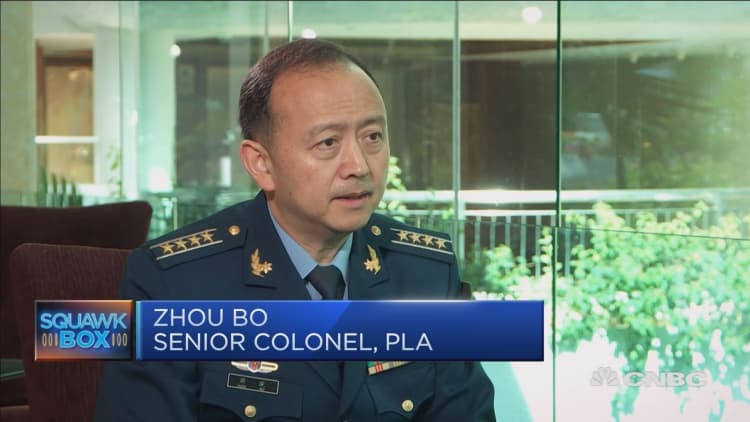WASHINGTON — The Pentagon this week slammed the continued Chinese militarization of the South China Sea on the heels of a CNBC and NBC News report that Beijing was conducting anti-ship ballistic missile tests in the disputed waters.
"Of course the Pentagon was aware of the Chinese missile launch from the man-made structures in the South China Sea near the Spratly Islands," Pentagon spokesman Lt. Col. Dave Eastburn wrote in an emailed statement in response to a CNBC and NBC News inquiry about the tests.
"What's truly disturbing about this act is that it's in direct contradiction to President Xi's statement in the Rose Garden in 2015 when he pledged to the U.S., the Asia-Pacific region, and the world, that he would not militarize those man-made outposts," Eastburn added.
Over the weekend, the Chinese carried out an anti-ship ballistic missile test and fired at least one missile into the South China Sea, according to a U.S. official who spoke on the condition of anonymity in order to discuss the sensitive intelligence. The window for testing remains open until Wednesday, and the official was expecting the Chinese military to test again before it closes.
The development came as the U.S. and China had just paused trade tensions. During the G-20 summit over the weekend in Japan, U.S. President Donald Trump and Chinese President Xi Jinping agreed to restart talks and not impose new tariffs on each other's goods.
Home to more than 200 specks of land, the South China Sea serves as a gateway to global shipping routes where $3.4 trillion of trade passes annually.
The numerous overlapping sovereign claims to islands, reefs and rocks have turned the waters into an armed camp. Beijing holds the lion's share of these features with approximately 27 outposts peppered throughout.
"I'm not going to speak on behalf of all the sovereign nations in the region, but I'm sure they agree that [China's] behavior is contrary to its claim to want to bring peace to the region and obviously actions like this are coercive acts meant to intimidate other South China Sea claimants," Eastburn said in the emailed statement.
In May, CNBC learned that China quietly installed anti-ship cruise missiles and surface-to-air missile systems on three of its fortified outposts west of the Philippines in the sea.
By all accounts, the coastal defense systems represent a significant addition to Beijing's military portfolio in one of the most contested regions in the world.
According to U.S. intelligence reports, the installations mark the first Chinese missile deployments to Fiery Cross Reef, Subi Reef and Mischief Reef in the Spratly Islands.
The Spratlys, to which six countries lay claim, are located approximately two-thirds of the way east from southern Vietnam to the southern Philippines.
— NBC News correspondent Courtney Kube contributed to this report.



